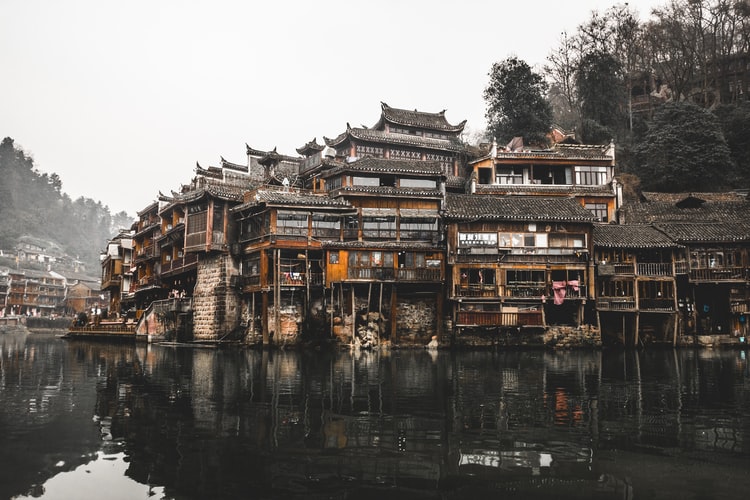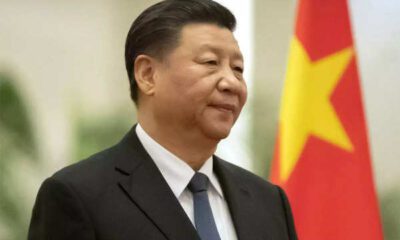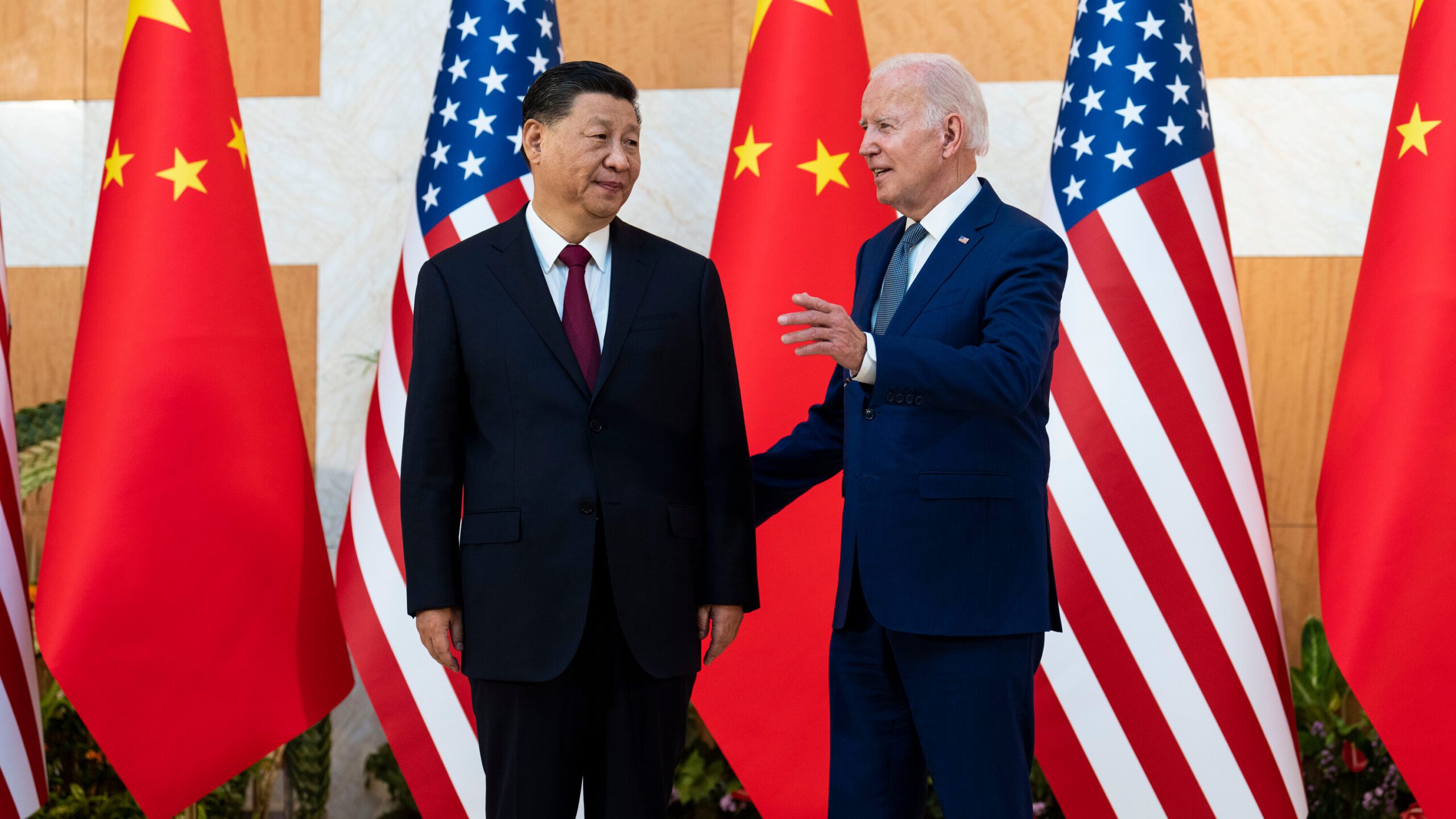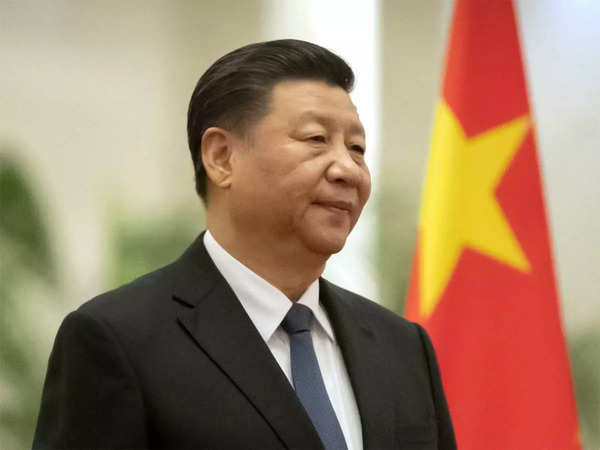China
The Plight of Uighur Muslims in China
Published
4 years agoon


Just because China names it different doesn’t mean “concentration camps” are “re-education centers.” Uighur Muslims are being tortured in detention camps, and it is evident that the Chinese government wisely denies the claim. The Xinjiang province of China consists of Uighur Muslims, and they are the minorities, so it’s no wonder they are being inflicted pain on. It’s actually happening in most parts of the world.
For example, Sri Lanka has a deep-rooted history of ill-treatment for minorities. Even during a pandemic like this, it’s more concerned with denying Muslims’ burial rights (minorities) than to consider other conspiracies that are taking a turn in the country. So it’s not new for Muslims to experience racism. But China is way ahead in this agenda. If you want to turn a blind eye to what’s happening in China, you can, but wouldn’t it be nice to take action? You have the voice so you could raise your voice, and that’s precisely taking action!
What’s actually happening in China?
Uighurs Muslims belong to the Turkic ethnic group, and they are around 11 million in total, but most live in Xinjiang, China. Other Uighur Muslims are in Kazakhstan, Kyrgyzstan, Uzbekistan, and Australia. Although Xinjiang was not a part of China, they took control of it in 1949, and some Uighur Muslims still refer to it as East Turkestan.
Uighur Muslims speak various dialects; one of the main dialects is impacted by Standard Soviet and Standard Xinjiang. Apart from other inhumane activities carried by China, they also force Uighur Muslims to learn Mandarin. They intend to erase the native language spoken by Uighur, which is Uighur.
As we all know, China is allegedly persecuting Muslims by forcing them into concentration camps that they have termed as “re-education centers.” In these camps, Muslims are made to consume pork, which is haram (impermissible) for them. It got even worse when kids were separated from their guardians not to learn Islam and not grow up to be Muslim kids. Another heart-wrenching case reported by the BBC was “The US seizes ‘forced ‘labor Chinese hair imports.” It was assumed to be women’s hair forcibly taken from prisoners or children in the detention camps.
The Chinese government has prohibited veils worn by Muslim women and men from growing long beards. It also destroyed mosques in Xinjiang. As per reports, more than 1 million Uighur Muslims have been taken into 85 contraction camps by now. Satellite images revealed the lands, but only in 2017-2018, this movement got critical.
It’s not surprising that the Chinese government denied the accusation, and after they were held accountable for the camp images, watchtowers, and wire fences, they acknowledged them as re-education camps maintained for Uighur. This sounds skeptical and weird. Uighur Muslim women spoke out about forcible sterilization. There have been reports that Women are induced with contraceptive devices, and if successful, concentration camps are their destiny. Many Muslims in Uighur have experienced violent physical abuse because of their beliefs. It’s crucial to know that Uighur Muslims’ region is high in mineral and oil supplies.
What’s China’s Take on This?
When people raised concern, the Chinese government reassured everyone that they are running “re-education camps.” They also mentioned that they are combating terrorist activities and extremism. This decision was made because of the brutal incidents in 2009 and 2014 in the Urumqi and Kunming railway station.
The Chinese Ambassador also has mentioned that since 1990, there have been several terrorist attacks. And he denied that the Chinese government is mistreating Uighur Muslims in China.
What’s the World’s Response?
In 2019, the UN Human Rights Council received a signed letter from 23 countries, while most European countries condemned China’s violence. Exactly after four days, the Chinese government and their mistreatment were backed by 37 countries, and they especially mentioned China’s achievements related to human rights. Unfortunately, most countries that backed China were Muslim countries such as Qatar, Sudan, Pakistan, and Saudi Arabia.
However, in 2019, during the UN General Assembly, the USA condemned the Chinese government for Uighur Muslims’ alleged treatment. Around 30 countries supported the condemnation. One of the recent responses was from the UK, and it says, “UK chief rabbi: Unfathomable mass atrocity perpetrated on China’s Uighur Muslims.” It’s actually getting worse day by day. If we choose to remain silent, the injustice will continue.
What’s Our Role Here?
Although we can’t cater to all the allegations, we can respond and react to at least one. Yes, I’m talking about forced labor. We are forced to assume that our voices don’t matter, but it’s not the case. The fashion industry is one of the most profitable industries, but you can question and hold them accountable. You can contact brands and call them out on social media and ask them how their products are made. Raise the issue of forced labor in social media, and you simply call out using hashtags. You have to demand transparency if you want to end the violence carried on marginalized groups.
We can be the voice for the voiceless. It’s important to talk about how Uighur Muslims are being forced into detention camps. We must stand against restricting basic human rights and it’s insane that they are ill-treated because they are Muslims or minorities. It’s crucial to sign petitions that raise their concerns over this issue. We need to call upon leaders to act against China’s allegations of Uighur Muslims. We can request politicians and government MPs to talk about the concentration camps and request transparency.
It sounds impossible until you make it happen. But with the Almighty’s help and blessing, we can get there. Make sure to spread the word in local mosques about the horrific situations, talk to your family and friends about it. You should also include Uighur Muslims in your dua because that’s the best form of help you could do!
Keep talking until you are heard and served right!
You may like
-




Israel’s intense Practices to Uproot the Palestinians in Jerusalem
-






Christian militia infiltrate Lebanon
-






Argentina wins the World Cup; are there any other winners?
-




What Xi Jinping Aims, Acquires – The Return of Persistent President
-




Ascendancy of extreme Jewish fascism seen as main outcome of latest Israeli elections
-




How Practical is the Secular Democracy of India? Curbing of Religious Freedom in Kashmir
China
China’s Growing Foothold in the Middle East -The Rise of a New SuperPower
Published
1 year agoon
February 28, 2023

Overcoming the setback of the COVID pandemic, China is well on its way to establishing its foothold as the new superpower. And the most recent of its interest – The Middle East.
After trapping under-developing countries in South Asia and Africa in its debt trap, the dragon is searching for a new ally. An ally with equal resentment with the west and who can support China is becoming the next America, hence Saudi Arabia.
The Glamorous Welcome of President Xi Jinping on the Middle Eastern Soil
Saudi Arabia rolled out the purple carpet when Chinese President Xi Jinping visited Riyadh in December 2022.
Xi Jinping’s journey to Saudi Arabia is his first since 2016, and it is only his third trip abroad since the coronavirus outbreak started. Chinese President Xi Jinping was in Saudi Arabia for a three-day visit that made dozens of agreements for trade, technology, and the economy.
The timing of Xi’s three-day trip to Saudi Arabia is a bit perplexing. The organization of oil-producing countries’ refusal to boost output and the West’s decision to cap the price of Russian oil may indicate that China, Saudi Arabia, and Russia have aligned anti-Western policies.
Considering the warm welcome of Xi Jinping by Saudi Crown Prince Mohammed bin Salman (MBS) and a number of agreements and summits heralded, the White House urged – China’s efforts to sway world events are “not favorable” to the international system.
According to a US spokesperson, the United States is aware of China’s efforts to increase its global influence. Moreover, the USA is well aware that the Middle East is undoubtedly one of those areas where China wishes to expand its influence.
Beijing’s focus on Riyadh may concern the US and its western allies as China is improving its relations with Middle East countries, which are growing further in weapon and oil supply.
Read Next: How China is Engulfing Poor Nations into its Vicious Debt Trap
The $30 million Deal with the New Superpower
The signing of 35 investment agreements worth $30 million between China and Saudi Arabia has dramatically improved the two nations’ commercial ties.
Saudi Crown Prince Mohammed bin Salman and Chinese President Xi presided over the signing of the agreements. The first was an alignment plan between the nations’ Vision 2030 and the Belt and Road Initiative.
Moreover, Prince Abdulaziz bin Salman, the energy minister of Saudi Arabia, and He Lifeng, the head of China’s National Development and Reform Commission, signed a memorandum of understanding on hydrogen energy.
Notably, Chinese cooperation in nuclear energy, security, space, and technology was the highlight of all agreements. China is fostering this relationship with Saudi Arabia, in the region that was formerly under American influence.
During the three-day visit to Saudi Arabia, President Xi addresses a speech in the Saudi capital of Riyadh. The leaders and representatives from the six Gulf Cooperation Council nations – Bahrain, Kuwait, Oman, Qatar, Saudi Arabia, and the United Arab Emirates were present.
China is one of the biggest oil importers from Saudi Arabia, and the President indicated an unorthodox view during this speech. Mr. Xi specified using the Shanghai Petroleum and Natural Gas Exchange to settle oil and gas contracts in Chinese currency.
Crude oil, typically valued in US dollars, is exported by Saudi Arabia more frequently than any other country. Moves away from the US dollar could weaken the dollar’s position as the world’s reserve currency. However, Saudi Arabia is unlikely to make significant changes because it pegs its currency to the dollar.
China and Saudi Arabia both hailed Mr. Xi’s visit as a historic occasion as the relations that were once limited to oil-based were extended into sales, technology transfers, and infrastructure projects.
The Pressure on the USA in the MiddleEast
Due to deteriorating relations with the US and other Western countries, China seeks to strengthen ties with Middle Eastern nations during Xi’s visit. The links between China and Saudi Arabia are hurting the USA economically and globally.
Saudi Arabia has been a loyal ally of the US for a long time. But recently, its connections with China have significantly created pressure on the USA.


Joe Biden visited Saudi Arabia in the summer to calm skeptical friends and reaffirm American engagement in the Middle East. The President ensures the leaders of Arabs in Riyadh that the United States won’t withdraw and let China, Russia, or Iran fill the void.
But he was unable to persuade the Saudis to increase oil output. Instead, Arab would shortly spearhead a plan to reduce oil production by almost 2 million barrels per day as part of an agreement with Russia.
Along with Saudi Arabia, the US has strained ties with China. Saudi Arabia and China have also adopted stances about the Ukraine War that differ from those of the West.
Both parties have refrained from backing sanctions against Russia. Riyadh has repeatedly maintained that Moscow is a significant energy-producing partner who needs to be engaged on OPEC issues.
UAE: Growing Influence of the New Superpower
In the United Arab Emirates, relatively youthful and forceful leaders are now in charge of the Gulf. Although these nations still significantly rely on the United States for their needs in terms of national security and the sale of weapons.


Although the entry of China into the Middle East has raised concerns and competition among western countries, the United Arab Emirates is taking advantage of the competition.
Moreover, Prince Mohammed wants to reduce Saudi Arabia’s reliance on oil exports by diversifying the country’s economy. He wants to develop a new Saudi military industry as part of a bigger plan to increase the kingdom’s independence and economic might.
Prince is also planning to diversify the country using new technologies and improve internal infrastructure innovatively. China is regarded as a crucial ally in developing the nation’s defenses and infrastructure since it can offer the necessary expertise and technology.
On the other hand, China’s priority is energy, which depends on a steady flow of fossil fuels to function. China has been alert since price fluctuation due to Russia’s invasion of Ukraine this year. As well as a Chinese energy crisis last year resulted in blackouts that shut down companies and towns.
China is therefore acting wisely by trading steady fuel exports for technology, nuclear energy, and space technology with Saudi Arabia.
Nevertheless, Xi’s trip to Saudi Arabia showed that Saudi Arabia and the other Arab nations have options. And they will keep using their growth strategy for international stakeholders to their advantage.
China to Arrest USA Autonomy over Saudi Arabia?
Saudi Arab officials have already said that they have never supported polarization. Saudi Arabia is only striving for the nation’s interest; their interests are in the West and the east too.
However, the young lead of Saudi Arabia is searching for an alternative to enhance the nation’s economy without relying on oil exports. And China has a good chance to arrest US autonomy over Arab countries by providing all required help.
The relationship between Saudi Arabia and the US as it stands right now is fickle. However, China and Saudi Arabia’s strong alliances make it the ideal time for China to seize the chance to replace the United States as Saudi Arabia’s primary trading partner.
The new relationship will not only weaken the USA’s influence in the region, but it will also hurt the US superpower’s global image.


The world is running out of computer chips. And due to the unprecedented shortage of electric chips and semiconductors, a new microchip war is brewing between the two largest manufacturers: India & China.
But, who is winning it? Here’s an explainer:
The Semiconductor Crisis: Explained
Semiconductors are used to make integrated circuits. These microchips are the lifeblood of all electronic appliances, from smartphones, laptops, and gaming consoles to supercomputers and modern weapons.
Powering the technological evolution over the last two decades, the demand for semiconductors has skyrocketed. However, the 2020 pandemic halted the chips’ manufacturing, sparking a global semiconductor crisis.
The crisis was so bad that Apple lost 6 billion dollars in revenue, Maruti had to cut down 40% of its production, and Mahindra had to cut down 20% of its production. Due to chip shortages, the auto industry has already lost 100 billion dollars in revenue.
Even though production has resumed, manufacturers are still unable to fill out the shortage caused by COVID.
So, why is there a sudden shortage of semiconductors and their impact on different industries?
The Rush of people with Electronic Gadgets
The first reason for the shortage is that the industry had already been growing rapidly and was already on the brink of shortage. According to the semiconductor industry association, more than 100 billion integration circuits are used daily worldwide.


The market is so huge that the industry’s biggest players, including Intel, Micron, Nvidia, and Qualcomm, can’t keep up with the demand, given the enormous size of the market.
The Microchip War & Impact of Covid-19
Lockdown-induced online work dramatically increased demand for electronic devices. But with the manufacturing and transportation services primarily halted, demands outstripped supply.
Another the reason why the shortage is so difficult to recover is that manufacturing a microchip typically takes more than four months. Additionally, microchip manufacturers need giant factories with dust-free rooms, multi-million-dollar machines, molten tin, and lasers.
Since manufacturing cannot be increased on such short notice, the wait times for chips increased alarmingly. The situation has worsened so severely that the waiting time spiked from 11.8 weeks in September 2019 to 21 weeks in August 2021.
Consequently, the market value of semiconductors grew over 20% ($600 billion) in 2021.
Hence, the radical difference in supply and demand has turned the table, and this is why companies from various areas across the world from various sectors have started facing production issues.
The four major industries that have furiously faced the heat of crisis are auto, LED lighting, consumer electronics, and the appliance industries.
What is the position of India in the semiconductor market?
Despite homing big heads like Intel, Micron, and Samsung housing and R&D centers in India. India doesn’t have a significant chip manufacturing industry.
When looked at India’s semiconductor trade situation, India became the 13th largest importer of semiconductor devices in the world in 2020, with $2.38 billion in semiconductor device imports.
And now comes the story’s climax behind the semiconductor war between India and China.
The terrifying part is that about 68.1% of India’s semiconductors were imported from China in 2020. Followed by 40% in and 26% from Hongkong in 2022.
So, what is India doing to fix the situation and reduce its dependence on China? And How is India indirectly in the position of war with China in the semiconductor industry?
India Vs. China: The Microchip War
The roots of India & China’s microchip war can be traced back to the Quad Summit.
During the quad summit conference held by US president Joe Biden on the 24th of September 2021 debated on how to tackle several aspects of economic challenges that come through different countries’ economic development. And one such aspect was the semiconductor shortage in the world.


Long story short, chip manufacturing is a complex process requiring multiple steps. So if each country sets up five divisions for five different processes, it is both costly and time-consuming.
Because of this, India, Australia, Japan, and the US have chosen to work together to execute only those processes that best suit their strengths while transferring the remaining ones to other nations.
That means the US will design the semiconductor; Japan will provide resources to make semiconductor that is raw materials and chemicals like silicon wafers and ICs. While Australia will come up with an electronic supply chain as it has access to critical materials and advanced mining.
Meanwhile, India has many skilled engineers and laborers for cheap assembling and manufacturing.
So, in the quad summit US, Japan, Australia, and India joined hands to build a robust semiconductor supply chain based on their strength to eliminate their dependence on China, Hongkong, and Taiwan.
Thus India’s INR 76000 cores production incentives program is indirectly threatening Chinas mega semiconductor chip industry.
Will the Microchip Program Really Benefit India?
The US is very well aware of future weapons and is acting smartly to overcome China in supercomputing and AI tech. That’s why the US wants semiconductor technology to be kept away from the hands of China.
Hence in October 2022 US banned all semiconductor exports to China. Alongside baning all the technologies that China can use against the US.
The US does not want China to develop weapons that may use against the US military. Consequently, fostering India to come up with semiconductor manufacturing to cut the wings of China in the field of making chips.
As discussed above, the US is king in designing the chips, but with sanctions on exporting any such technology from the US, China will face heat.
While the US has joined hands in the quad summit to design semiconductors for India, here comes the answer to that incentive program.
Is India Winning the Microchip Chip War?
Over the next two years, the Indian government plans to establish 20 semiconductor plants. To tackle the shortage of semiconductor Government of India has lined -up with attractive incentive support for companies engaged in silicon conductors, photonics, semiconductor packaging, compound semiconductor manufacturing, sensors fabs, and semiconductor design.
Moreover, India is also tying up with Taiwan and encouraging semiconductor companies to manufacture semiconductors in India by providing land at affordable prices for their setup.
India is in an overstated circumstance where it is a semiconductor-importing nation and is about to switch to a semiconductor-exporting nation. Here is some heat in China. And that sparks an unintentional semiconductor war between China and India.
China
What Xi Jinping Aims, Acquires – The Return of Persistent President
Published
2 years agoon
November 7, 2022

The results of China’s presidential election were known to the entire globe, and especially to the citizens of China. In the wake of the recently concluded party congress in Beijing, Xi Jinping has established himself as the kingmaker.
Xi Jinping was a driving force behind the repeal of presidential term limits in 2018, which opened the door for him to hold the position of leader for life if he desires.
Xi Jinping has broken the previous history by accepting a third term as party leader and significantly enhanced the concentration of power at the organization’s top.
But what does the persistent president’s return means for China and the world? Here’s a detailed insight.
“The World Development needs China…”. – Xi Jinping
After being elected as president of China for the third consecutive term in a closed-door election, Xi Jinping stated in his first address to the audience, “China cannot develop in isolation from the world. The world’s development also needs China,”
This quote shows how China focuses on its growth to have a more prominent global effect as a superpower.
Additionally, Xi Jinping, with the proceedings of the new term, wants to focus on achieving economic, industrial, and technological goals. That will give the Chinese economic and technological sector a competitive edge to become the next prominent superpower.
However, the road ahead toward leading China as a top superpower for Xi Jinping needs to be smoother. There are unresolved domestic problems, economic difficulties, and hostile international relations with neighbors like Taiwan and India. One of his biggest concerns would be his relationship with rival America.
Nevertheless, Xi Jinping continues to hold the view that despite numerous challenges in becoming a superpower, the Chinese people would always support and remain steadfast on this side.
“On the road ahead, no matter high winds, choppy waters, or even dangerous storms, the people will always be our most solid support and strongest confidence,”
President Xi Jinping
Two Countries Share a Friendship with ‘No Limits’ – Xi Jinping on Relationship with Russia
Mr. Putin will need China, said Alicia Garcia Herrero, head economist for Asia Pacific at Natixis. Russia must continue importing semiconductors from China to keep military, industrial, and civil needs operational.
Due to restrictions from US and European alliances, Russia has no choice but to export chips from China to operate for civil and military purposes.
Chip export from China to Russia more than doubled to roughly $50 million in the first five months of 2022 compared to a year earlier. While exports of other components like printed circuit boards also witnessed a double-digit percentage increase.
However, Xi Jinping raised concerns over the Russia-Ukraine war during his visit to an international summit in Uzbekistan with President Putin.
The focus, though, was on Putin’s oblique acknowledgment of Chinese “concerns” regarding the invasion.
“We highly value the balanced position of our Chinese friends when it comes to the Ukraine crisis,”
Putin, Russian Presidnt
Nevertheless, China has been cautious in its interactions with Moscow to avoid falling victim to any potential sanctions and alienating other nations, such as those in Central Asia, with China forging economic links.
Yet, with the ongoing trade across two borders of China and Russia, Xi Jinping’s thought over Russia’s invasion clearly — supports the friend firmly in the backend while criticizing and commending Russia in front of the world.
“Regard science and technology as our primary productive force” – Xi Jinping
The most potent president of decades in China, Xi Jinping, at the opening of the meeting, straight away displayed China’s powerful ambitions and reliance on science and technology.
Violating a tradition that had been in place for 40 years, six out of politburo’s 25 members now have a background in science. Compared to just one person in the previous politburo, who had no members with education or experience in science or technology.
And there was a significant turnaround of the party’s top leadership after Xi Jinping was reinstated as general secretary for a third term.
Xi Jinping’s choices emphasize building up Beijing’s powerful military and technological capabilities so that China can defend or resist any pressure from the US and its allies, especially when it comes to enforcing territorial claims over Taiwan.
Moreover, China is also expected to prioritize research and development in aerospace and space science. To boost the aerospace and space science workforce, China aims to bring back Chinese scholars who are currently abroad or hired by foreign researchers.
Such initiatives and endeavors unequivocally show China’s priority for science and technology in the years to come. In 2021, China spent around 2.8 trillion yuan, 2.4% of China’s GDP, on Research and Development.
However, the current five-year plan for the nation sets a target of an annual increase of more than 7% every year.
“China must strengthen the unity of all ethnic groups.”
As western countries continue to charge Beijing with committing genocide against the predominantly Muslim Uyghur population in the region, China’s president, Xi Jinping, visited Xinjiang for the first time in eight years.
A supra-governmental group subject to US sanctions, the Xinjiang Production and Construction Corps (XPCC) was inspected by the president, who lauded the organization’s “excellent progress” in reform and growth.
Nevertheless, President Xi Jinping’s visit to the Xinjiang area comes out as more deliberate than opportunistic as the ruthless tactics employed by the Chinese government against the Uyghur minority in the northwest Xinjiang province have been brought to light by a cache of leaked documents and images.
Uyghurs are allegedly forced to unlearn their culture and religion via a network of institutes run by Chinese authorities in the area. The exposed documents state that
China has a shoot-to-kill policy for Uyghurs who attempt to flee the internment centers. The materials also go against the Chinese government’s claim that the Uyghurs willingly attend the facilities.
However, China’s Foreign Ministry has rejected the allegation and said the Media is spreading lies and rumors.
Though China was seriously condemned by the UN and western countries, knowing such ruthless behavior of China towards minorities is nothing new. Such criticism compelled President Xi Jinping to travel to Xinjiang, a region he hadn’t been to in eight years.
However, the future of the oppressed Uyghur Muslims and other minority communities under Vi Jinping’s third term is still uncertain.
Read More: Modern Uyghur ‘Genocide’ in Xinjiang China
Trending
-



 Featured9 months ago
Featured9 months agoWorld passively watching as Israel perpetrates open-ended massacre in Gaza
-



 Featured10 months ago
Featured10 months agoIsrael is Hiding Crucial Demographic Facts About Palestinians
-





 Featured2 years ago
Featured2 years agoArgentina wins the World Cup; are there any other winners?
-



 Featured4 years ago
Featured4 years ago“Do Not Waste Water Even If You Were at a Running Stream” Prophet Muhammad
-



 Featured3 years ago
Featured3 years agoHistory of the Ottoman Empire
-



 Featured10 months ago
Featured10 months agoMuhammed: The Greatest Man to walk on Earth
-





 Featured2 years ago
Featured2 years agoChristian militia infiltrate Lebanon
-



 Featured4 years ago
Featured4 years agoFriendship is a Way For Jannah
